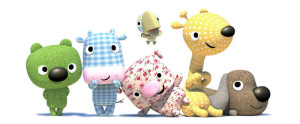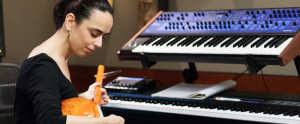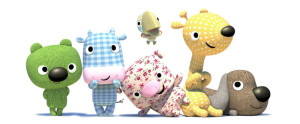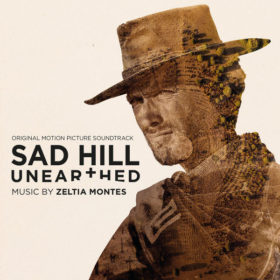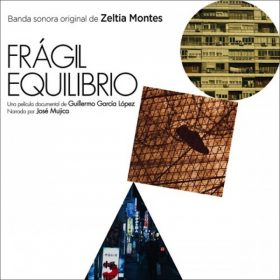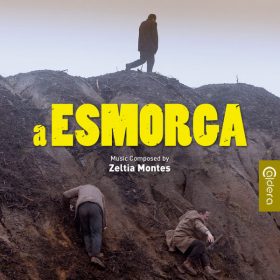In 2008, we discovered in a first interview the young Spanish composer Zeltia Montes, then just settled in Los Angeles, and who had just received two Jerry Goldsmith Awards during the fourth edition of the International Film Music Festival of the city of Ubeda, for her score to Pradolongo, her first full-length movie. Three years later, after the very favorable critical reception she received last year with her work for the animated movie The Happets In The Kingdom Of The Sun, it seemed right to return towards her to follow the progress of her career. Coincidence : at Ubeda, soon after this new interview, she received two new awards rewarding her talent one more time…
Three years ago, while settling down in Los Angeles, you spoke of a «leap of faith». How is your faith today?
I still have faith in me and in my music, though maybe my priorities have changed and working in the Hollywood industry is not a priority. I am still optimistic about my music, not because I feel I am better than any other composer but just because I feel I have something unique and hope there will be people that will recognize it and may want to work with me.
How is life in Los Angeles for a young european composer?
The main difference is that you can’t walk anywhere! Just joking, though it does make a considerable impact on your lifestyle since you have to use the car for everything and you feel the city is not built to encourage human relations. I think this large-scale concept also applies to professional relations and it is complicated to make yourself heard by the people that can make a difference on your career when you are starting as a film composer.
What did you learn in these three years? Are there some aspects of the work in the United States that disappointed you?
I learned many things in the US, especially the importance of promoting yourself better and building professional relationships. I was disappointed to find out that most directors are more interested in using music that resembles other famous scores from blockbuster movies, probably influenced by the use of temp music, than being open to new creative proposals. Another thing that disappointed me was the fact that many young composers in L.A. are willing to do anything to get credits and this includes not only working for free, but also putting money from their own pockets for recording with live musicians. Since most of the films have extremely low budgets for the music, the directors and producers are pleased to work with somebody that will give them more that they can pay for. I think all composers should be fighting to obtain respect for our profession.
Do you still live there?
I am now living in Spain though I still have my things there since I want to be able to go back and forth.
How did you get the assignment to score La Tropa de Trapo?
I was called by one of the producers because they had seen Pradolongo and had really liked the score. They were thinking of having an orchestral score for the film and thought that I could be a good match for it.
Animation is a long process : were you writing for the movie early on?
Yes, I started composing when they finished the animatics and they did many changes since then. So from the first sketches to the end of recording and mixing, almost six months went by, since many cues had to be adapted to the new cuts of the film.
 Which specifics demands did the production and the director had for your score?
Which specifics demands did the production and the director had for your score?
They wanted a very happy score that would portray the essence of the Happets, a group of animal friends all made of different colored fabrics that play together and care for each other. They wanted a lively music that could connect with the infant audience and that would give rhythm to the film, providing all the emotions that the simple animation technique used could not always achieve. They were interested in an orchestral classical sounding score but were open to all the suggestions I brought in order to make it more unique and creative.
Which traps did you wanted to avoid while composing for an animated movie?
Though it is true that animation films rely heavily on clichés to work, I wanted to avoid using too many of them since I thought we could widen the scope and be open to new creative resources. It is also true that all animation films are subconsciously related to Disney films and therefore to Disney scores too, but I wanted to avoid being too close to this style of scoring and try to play freely with styles and orchestration since the characters and the story were fresh and did not belong to this animation tradition.
What were the first steps that you took ?
I began by composing a piano sketch of the main theme, the theme for the Happets. It was very difficult to attain the desired happiness and liveliness with just the melody and chords, but I believe it is essential that a main theme provides all of the elements required in its simplest form. Once I had the skeleton for the main theme, I started to think about the instrumentation that would best fit the emotions I wanted to portray. I already had an idea of the desired instrumentation, but I also meditated for some time to find the right ingredients that would help my intentions. I then continued by working in this way for the other three themes.
The movie is intented for small children : how did you work with this in order to get the score you wanted ?
It was very important for me to create a score that was conceived for a children audience from the very beginning. I wanted this idea to be present in every step of the process because I believed that a great amount of the film’s success would be determined by this. The main theme was already constructed in a way to make it easy for a child to play it on the piano and one of its main characteristics was a simple major scale, which is the basis of tonal music. I tried to keep all the basic elements, such as the harmony, the melody and the rhythm, very clear on all themes, but I also wanted to include a wide range of styles to promote the huge learning abilities that children have. This film is also didactic and I wanted the score to be didactic too.
How did you approach the score in terms of themes and structure ?
The themes and structure were also composed in order to facilitate the comprehension of the story for the kids. There were four character-based themes : one for the Happets, one for Moo Moo (the cow that is the lead character), one for the depressed King and one for the glamorous sheep. I tried to make them all very distinct from each other and clearly recognizable, and make the development of each theme and theme interactions easily identifiable, so I could play with the rhythms and orchestration.
What can you tell us about your choice of instruments? Did the recording sessions present any particular challenges?
Children tend to lose their attention very easily so I thought that the best way to keep them engaged would be to have a fun and varied instrumentation that would give a unique color to each theme. The orchestra was also used in different combinations, keeping the use of the full orchestra and women choir only for the important moments. The Happets theme was characterized by the use of recorders, body percussion, woodwinds, strings, and other percussion toys ; Moo Moo’s theme by the use of piano, oboe, strings and ethnic percussion ; The King’s theme by the use of brass, harpsichord, double bass and jazz drums and the Sheep’s theme was in the style of 80’s pop/rock songs with synthesizers, keyboards, electric guitar, drums and fun lyrics in a language created especially for the kids. Since there was this big fusion of orchestral and non-orchestral instruments, all the non-orchestral instruments had to be recorded separately and blended in the mix later. So, though the process was more tedious, I feel it was definitely worth it!
What essential teachings did you benefit from this experience?
It was an extremely beautiful challenge since it allowed me to think like a kid and listen and feel as if it were the first time. I was able to play in every single way, adding sense of humor and carrying the emotions to the extreme, and it was really fulfilling to find out that it worked so well with the children! The most important thing I learned is probably not to be afraid of anything when composing!
We remember your lovely bassoon & piano sonata played at Ubeda in 2009. Did you compose some other concert works?
I haven’t premiered any new concert work yet, but I am working on an orchestral piece and I plan on writing more chamber music pieces.
What are your future plans?
I am just starting to compose the score to the feature film Vilamor directed by Ignacio Vilar. It is a very special project for me because I love the story and because it is a pleasure to collaborate with a director like Ignacio that believes in my work and puts real passion into his films.
Interview conducted in july 2011 by Florent Groult
Transcription : Florent Groult









